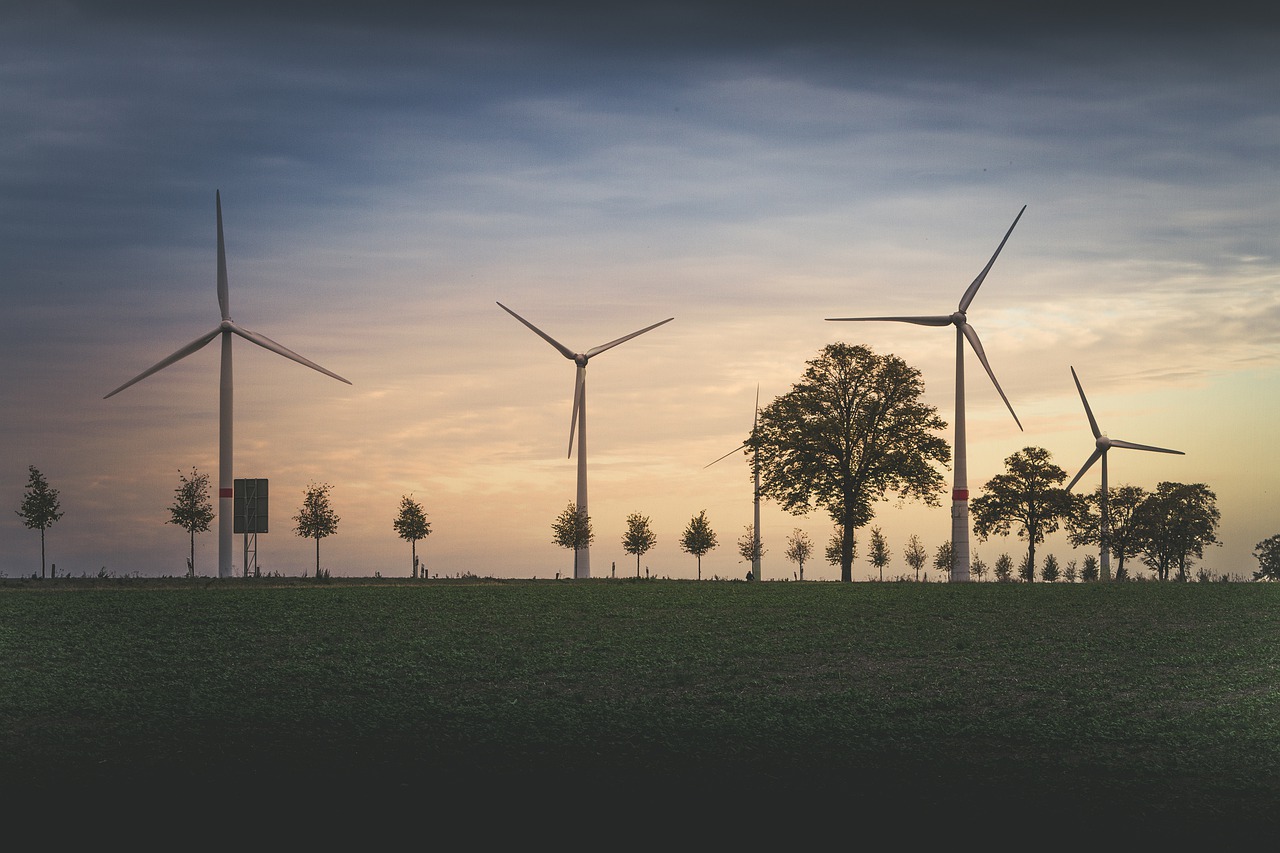Halting the Green Transformation: A Step Backward in Carbon (Part 1)

The outbreak of the war in Ukraine allowed many countries to find a convenient justification for the long-term increasing use of fossil fuels
Jakub Wozinski
The conflict between the West and Russia is sometimes presented as a clash between low-emission and ecological civilization and Vladimir Putin’s outdated fossil fuel “gas station”. Many politicians and experts argue that only accelerating the green transformation will allow a full victory over Russia by extinguishing its raw materials advantages. Such declarations not only completely disregard the problem of financing ecological communities by the Kremlin, but also further and further deviate from the facts. The reality in the form of growing problems with electricity supplies or the rapidly rising prices of raw materials shows that if the “zero-emission civilization” wants to defend itself, it will have to “sin” through the use of dirty energy for a very long time.
German reconciliation with coal
This is what Germany intends to do, recently adopting a bill stipulating that in the event of a reduction in gas supplies from Russia, the shutdown of coal and oil-powered plants will be suspended. The announcement of this kind appeared for the first time in March, and today it is already known that for the next two years, traditional power units are to be in a state of permanent readiness.
Such a sudden turn was approved by the European Commission authorities from the outset. Climate Commissioner Frans Timmermans gave the member states the green light to increase the share of coal in the energy mix already at the beginning of the Russian aggression against Ukraine, provided that they would immediately switch directly to renewable energy, bypassing the Russian “transition fuel”. This assurance was widely used, among others, by Czech Republic and Romania.
In the first quarter of this year, Germany acquired as much as 31.5% of all its energy from coal, which, compared to the same period last year, increased its share in the mix by 12.5%. In the Rhineland, the mine near Lützerath is still being expanded, which will probably cause several villages to be liquidated. Germany, in search of additional coal supplies, is also conducting intensive talks with Colombia, although the local mines have been devastating the natural environment and the health of the local population for years.
For a long time in Germany and other European Union countries, the use of gas was more profitable in the energy sector due to the EU’s CO₂ emission permit system. In view of the dramatic decrease in gas availability and the increase in its price, coal-fired power plants have returned to favor as a cheaper option. However, the return to coal was visible in Germany even before the outbreak of the war. In the third quarter of last year, the use of energy from this source increased compared to the previous quarter from 29.3 TWh to 35.1 TWh. In addition, in 2021 our western neighbor imported 39 million tons of coal, an increase of 24.5% compared to 2020. This year, imports are to increase up to 42 million tons.
The decisions taken by Germany also emboldened other member states of the European Union. After Gazprom announced that it would limit gas supplies via Nord Stream, the Netherlands and Austria also announced a loosening of the decarbonization rules. First, the Austrian government announced that it would reopen the now closed coal mine with a combined heat and power plant in Mellach, and then the Netherlands removed virtually all restrictions on the use of fossil fuels in the energy sector. Italy is also currently planning to reopen its old coal-fired power plants.
Fortunately, the British, remaining outside the EU, also kept common sense in ecological matters. Although the local government planned to close all coal-fired power plants by September, it has recently been decided to keep them in operation for the next several years. Officially, the plans are still to completely abandon coal by the end of 2024, but there are many indications that this deadline may also be modified.
California is slowing down
Carbon revisionism has recently been observed even in California. This left-wing state of the USA already in 2018 declared that it would achieve emission neutrality by 2045. The efforts of California are favored by enormous sunshine and many excellent locations for wind farms, thanks to which renewable sources already provided as much as 30% of all energy consumption in 2020. In the spring of last year, for a few hours, as much as 95% electricity in the grid came from RES, a fact that gave cause for local celebrations.
However, it turned out already last summer that the wave of great heat combined with the cessation of winds caused a two-day power outage for about 2 million residents. Concerns that exactly the same would happen this year led state authorities to delay the closure of four gas-fired plants with a total capacity of 3,700 MW until at least 2023. To do so, California made a specific request to the federal government to relax rules imposed by the Biden administration on resigning from fossil fuels.
The California authorities have recently revised the plans to shut down the 2250 MW nuclear power plant Diablo Canyon by 2025. An additional problem is that in earlier years, in times of crisis (mainly on hot summer afternoons), the solar state was able to purchase energy from neighbors, but with the simultaneous shutdown of traditional power plants across the country, it has become much more problematic.
A dragon without energy
China also has its own problems with access to energy. It officially intends to achieve the zero-emission target by 2060. The Middle Kingdom has not imposed such a strenuous pace on itself as the Californians, but nevertheless through the mouth of Xi Jinping it previously declared that it would not finance the construction of coal-fired power plants abroad. In practice, however, the Chinese state is implementing joint (also outside its territory) projects of coal-fired power plants with a total capacity of as much as 42 GW.
Investments in traditional energy sources have become a priority for Beijing, in particular after the severe supply crisis in September last year. The problem was particularly severe in the northeastern provinces, where many factories had to be simply shut down for a while. As a result, some foreign investors (including Apple) have announced that they will have to find a new location for their commercial activity.
China is widely regarded as the world’s biggest deserter from the green agenda, although in fact over the past decade it has managed to reduce the share of coal in its energy mix from 68% to around 56% and have become one of the world leaders in the field of renewable energy technologies. The problem, however, is that the steadily growing Chinese economy cannot cope without coal. Almost half of the world’s energy from this source is produced in China, which is, after all, the “factory of the world”. Last summer, the authorities in Beijing imposed new environmental standards on coal extraction and introduced restrictions on its import. However, the great shortage of energy made the Chinese government hastily backtracked on its earlier decisions, as at the time of the crisis, the coal reserves held were sufficient for only 16 days of uninterrupted operation of the largest power plants. In this situation, Beijing even decided to resume coal imports from Australia, with which relations have become quite tense recently. Coal production in China increased by 20% during the month compared to September, and in the entire 2021 it increased by 4.7% compared to the previous year. According to the forecasts of the State Development and Reform Commission, also in 2022 we should expect an increase in the consumption of energy derived from coal (production in the country is to increase by 300 million tons). China has paid a huge price for the energy crisis in the form of an actual halt to economic growth and will do everything possible to prevent ecology from threatening the economy.
(…)
This article was published in August 2022 in “Do Rzeczy” magazine.




